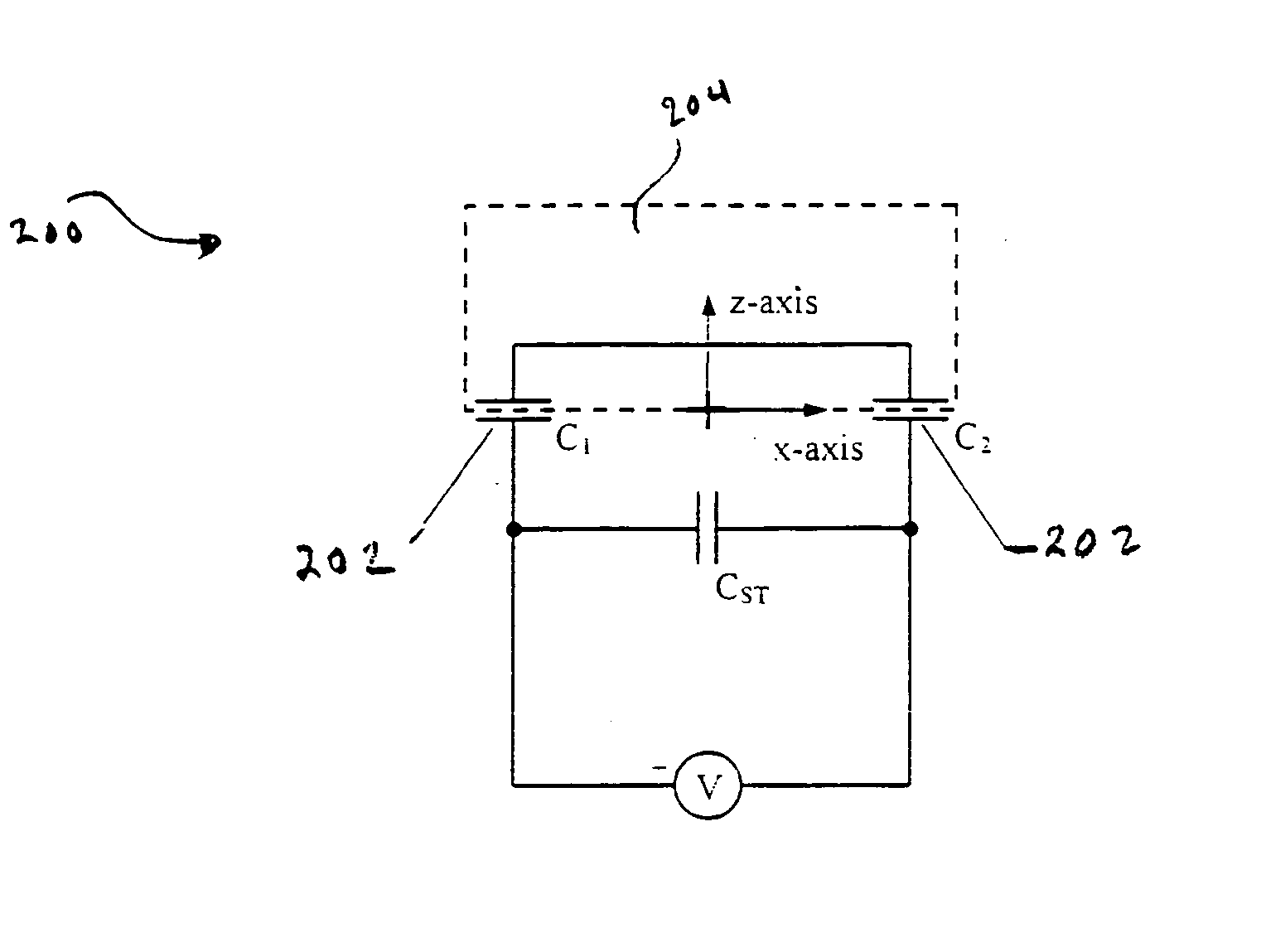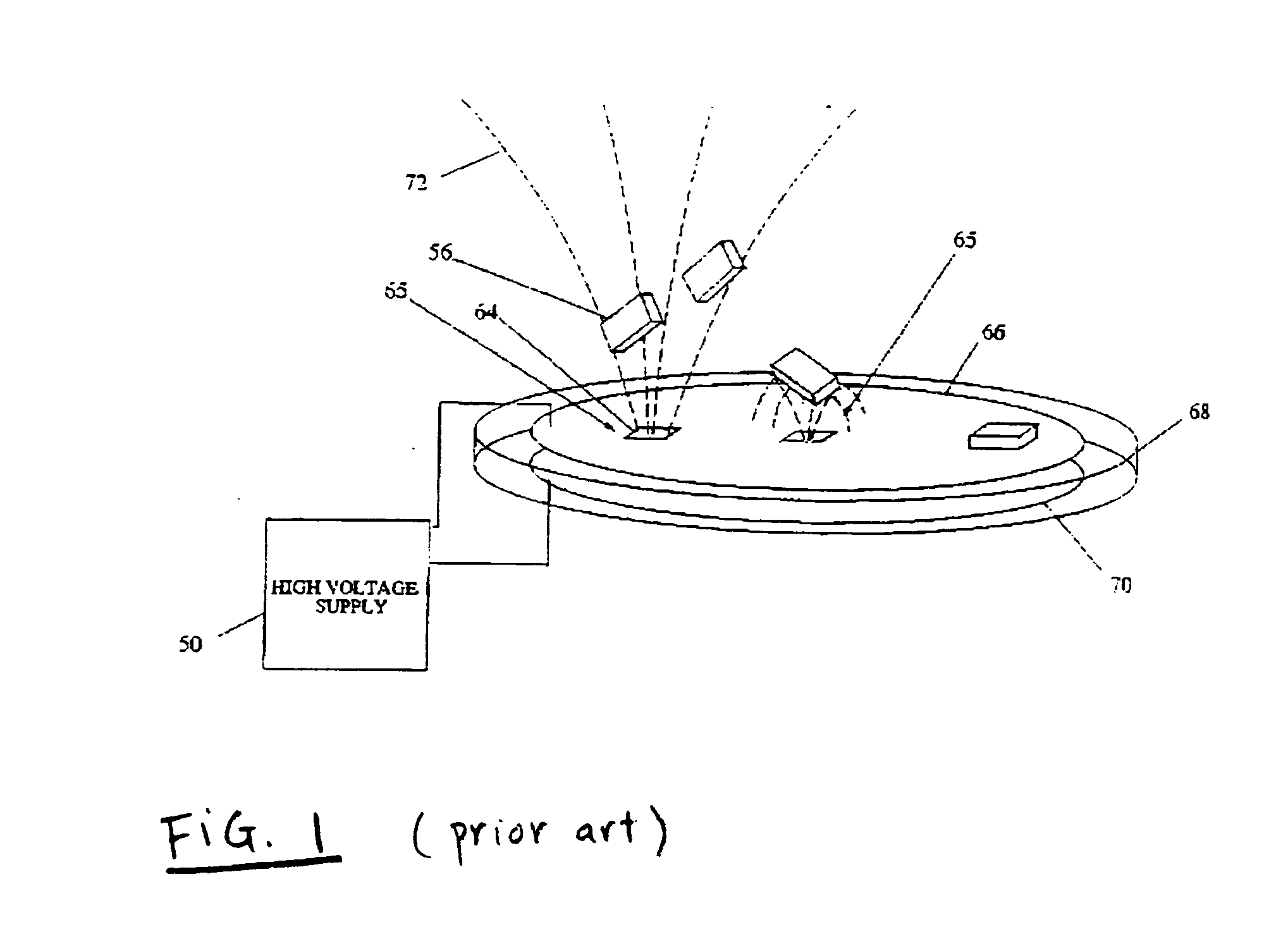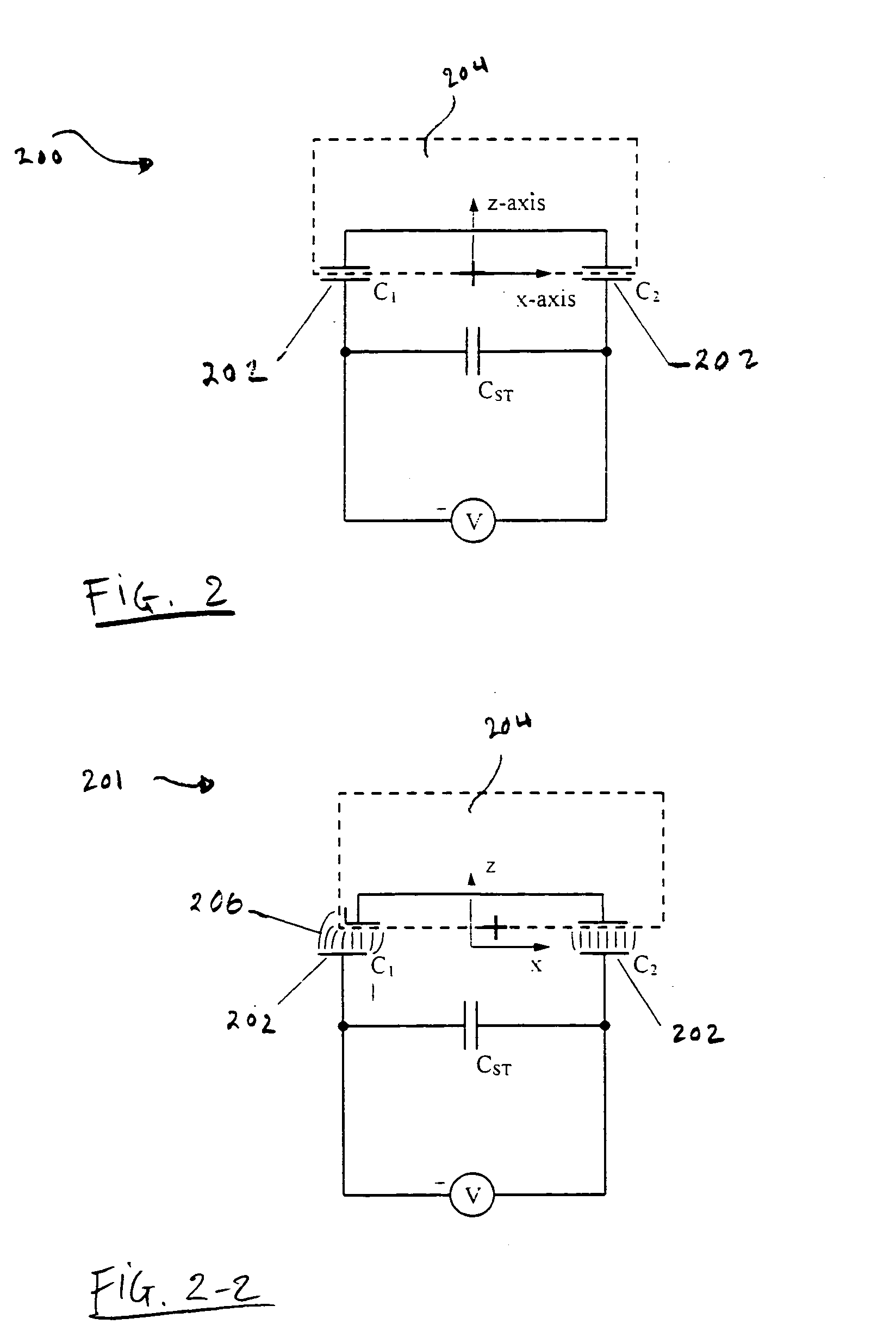Method and apparatus for self-assembly of functional blocks on a substrate facilitated by electrode pairs
a functional block and electrode pair technology, applied in the field of self-assembly and mounting, can solve the problems of high material and processing cost, inability to make large-area flat-panel displays cost effectively from single-crystal-silicon substrates, and inability to meet the needs of large-area flat-panel displays, etc., to achieve high magnetic permeability and high magnetic
- Summary
- Abstract
- Description
- Claims
- Application Information
AI Technical Summary
Benefits of technology
Problems solved by technology
Method used
Image
Examples
Embodiment Construction
Theory of Operation
The present invention relies on electrostatic forces generated between sets (usually pairs) of substrate bound mounting-electrodes and functional blocks. The planar electrostatic chunk geometry employed in this invention produce local electrostatic forces within a functional block that are a function of the difference between the local dielectric constant in the functional block and the dielectric constant of the medium surrounding the functional blocks during the assembling or mounting procedure. These forces include dielectrophoresis and negative-dielectrophoresis. Hence the distribution of materials (i.e., of different dielectric constant) within a functional block and the geometry of the mounting-electrodes determine the forces and torques acting on a functional block at a given location. The force or torque acting on a functional block at a given location is equal to the change of energy in the electrostatic field,
U=f(½)k·εO·E2dv (equation 1),
for a sma...
PUM
 Login to View More
Login to View More Abstract
Description
Claims
Application Information
 Login to View More
Login to View More - R&D
- Intellectual Property
- Life Sciences
- Materials
- Tech Scout
- Unparalleled Data Quality
- Higher Quality Content
- 60% Fewer Hallucinations
Browse by: Latest US Patents, China's latest patents, Technical Efficacy Thesaurus, Application Domain, Technology Topic, Popular Technical Reports.
© 2025 PatSnap. All rights reserved.Legal|Privacy policy|Modern Slavery Act Transparency Statement|Sitemap|About US| Contact US: help@patsnap.com



